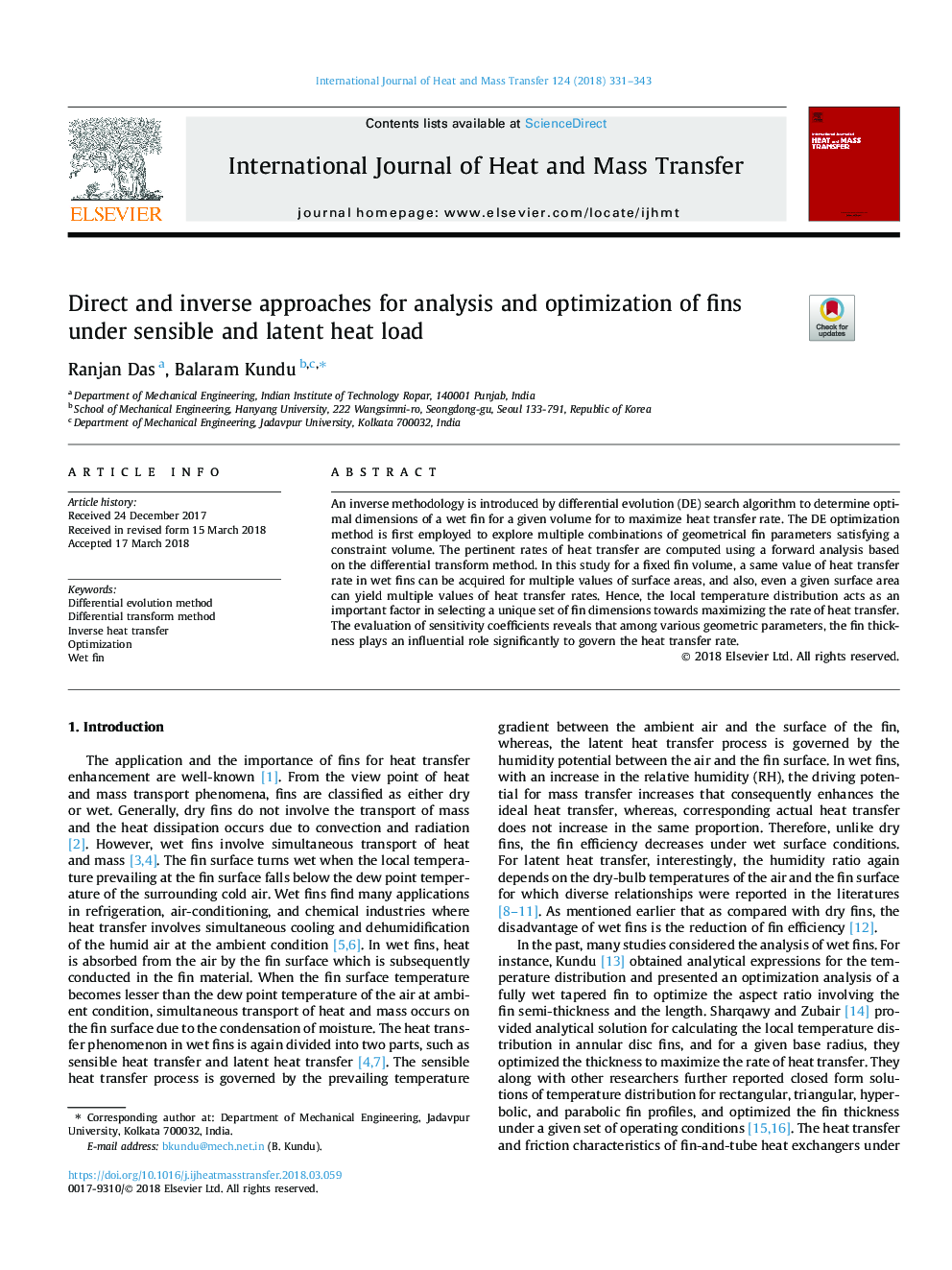| Article ID | Journal | Published Year | Pages | File Type |
|---|---|---|---|---|
| 7054178 | International Journal of Heat and Mass Transfer | 2018 | 13 Pages |
Abstract
An inverse methodology is introduced by differential evolution (DE) search algorithm to determine optimal dimensions of a wet fin for a given volume for to maximize heat transfer rate. The DE optimization method is first employed to explore multiple combinations of geometrical fin parameters satisfying a constraint volume. The pertinent rates of heat transfer are computed using a forward analysis based on the differential transform method. In this study for a fixed fin volume, a same value of heat transfer rate in wet fins can be acquired for multiple values of surface areas, and also, even a given surface area can yield multiple values of heat transfer rates. Hence, the local temperature distribution acts as an important factor in selecting a unique set of fin dimensions towards maximizing the rate of heat transfer. The evaluation of sensitivity coefficients reveals that among various geometric parameters, the fin thickness plays an influential role significantly to govern the heat transfer rate.
Keywords
Related Topics
Physical Sciences and Engineering
Chemical Engineering
Fluid Flow and Transfer Processes
Authors
Ranjan Das, Balaram Kundu,
